The stabilization of video recordings can make the difference between an amateurish and a professionally looking clip. Adobe After Effects provides powerful tools that allow you to transform shaky footage into impressive and fluid videos. In this guide, I will show you how to effectively use the built-in stabilization features to significantly improve the quality of your 3D projects.
Main Insights
- After Effects offers a robust Warp Stabilizer function for stabilizing 3D projects.
- The Subspace Warp technology analyzes movements in the foreground and background to minimize distortions.
- By precisely adjusting settings such as cropping and smoothing, you can achieve optimal results.
- It may be beneficial to carry out stabilization in multiple steps to get the best out of your footage.
Step-by-Step Guide
To successfully perform stabilization in After Effects, follow these steps:
1. Create a New Composition
Open After Effects and create a new composition. Import your footage and trim it to the desired sections if necessary. Use the "Create Composition from Selection" function for this.
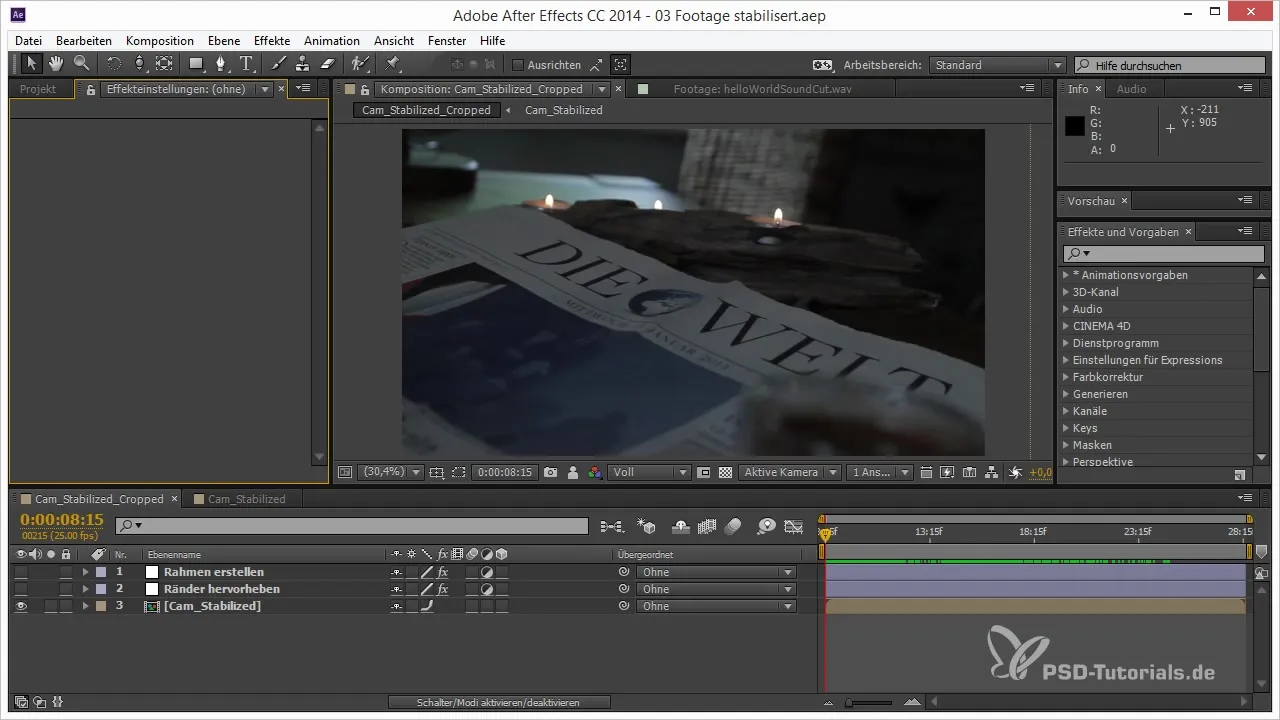
2. Apply Warp Stabilizer
Select the clip you want to stabilize and navigate to the effects. Add the "Warp Stabilizer." This effect will analyze the video content and attempt to stabilize the movements.
3. Adjust Crop and Smoothing
In the Warp Stabilization panel, you can adjust the "Crop" and "Smoothing" options. Experiment with the values to find the best balance between cropping and the visual result.
4. Utilize Subspace Warp Technology
Activate the Subspace Warp option in the Warp Stabilizer settings. This advanced technique allows After Effects to analyze and adjust movements in the foreground and background separately. This minimizes parallax distortions.
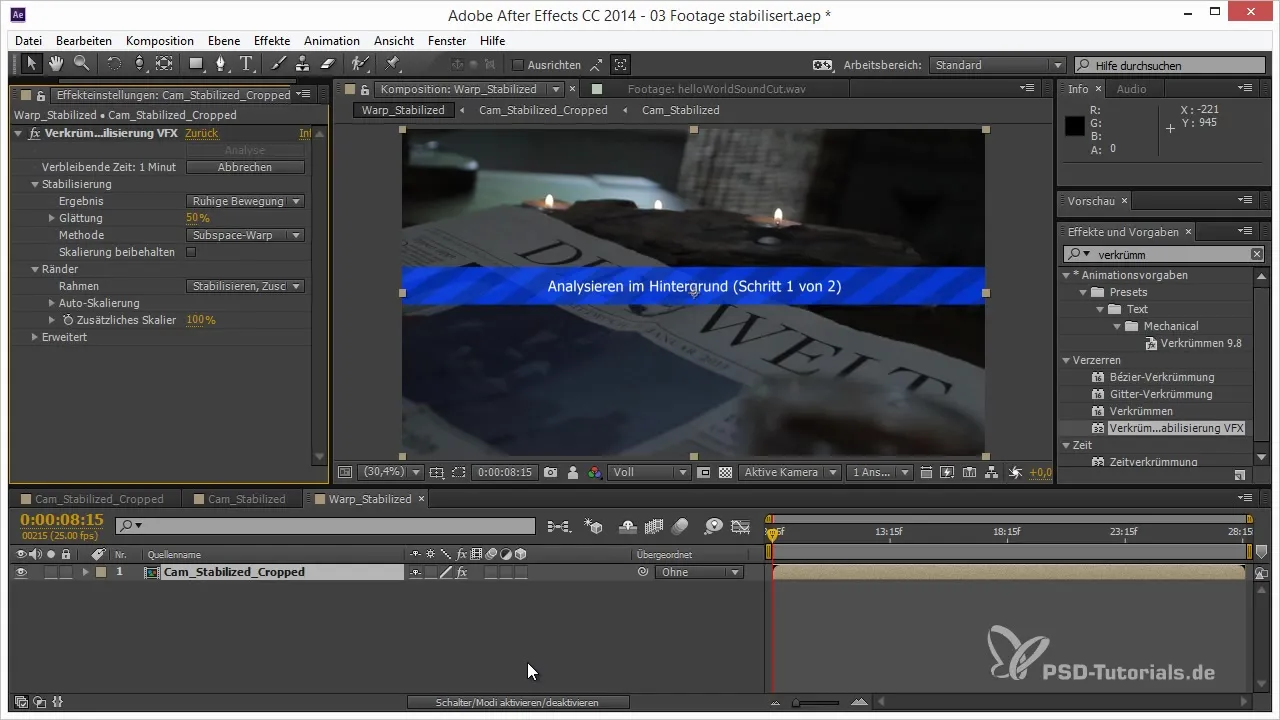
5. Check Stabilization
Play back the stabilized version to ensure that all camera movements appear smooth and without disturbing jitters. If there are still slight movements, review the settings again to make adjustments.
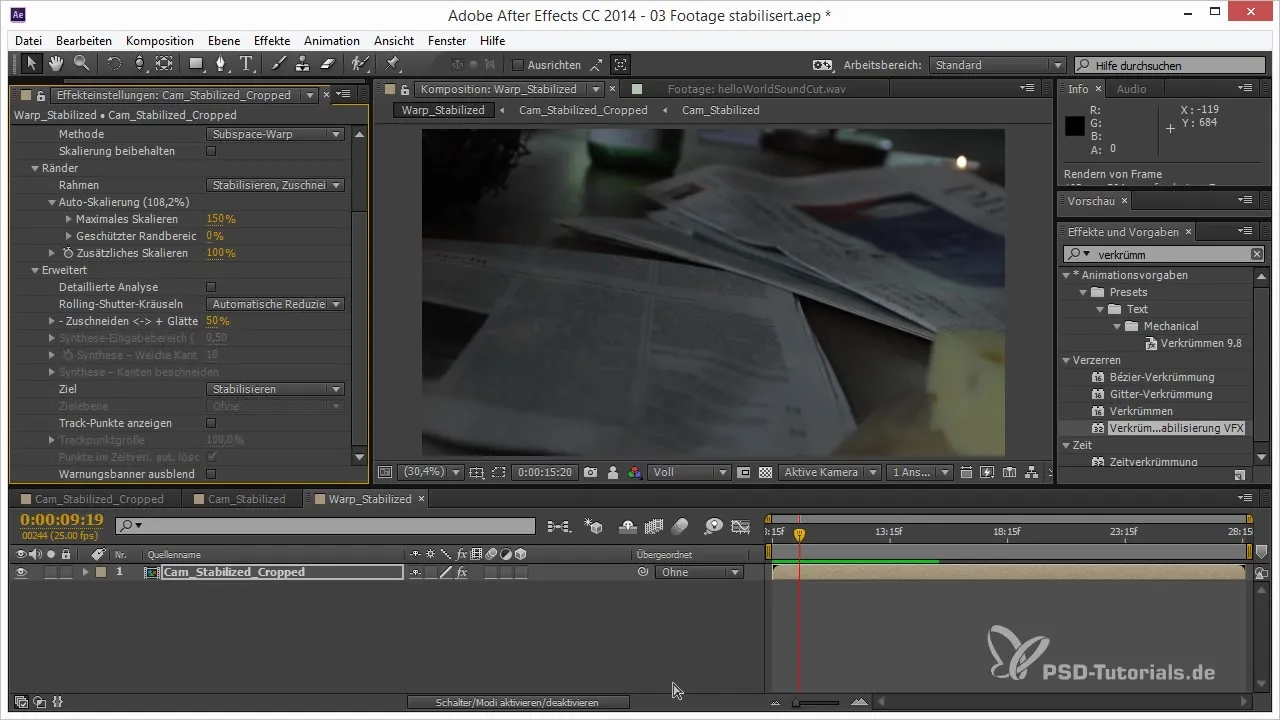
6. Feedback and Fine-Tuning
After trying out various settings, take a close look at the result and adjust the values as needed. This can be done, for example, by reducing the cropping values to better showcase the image content.
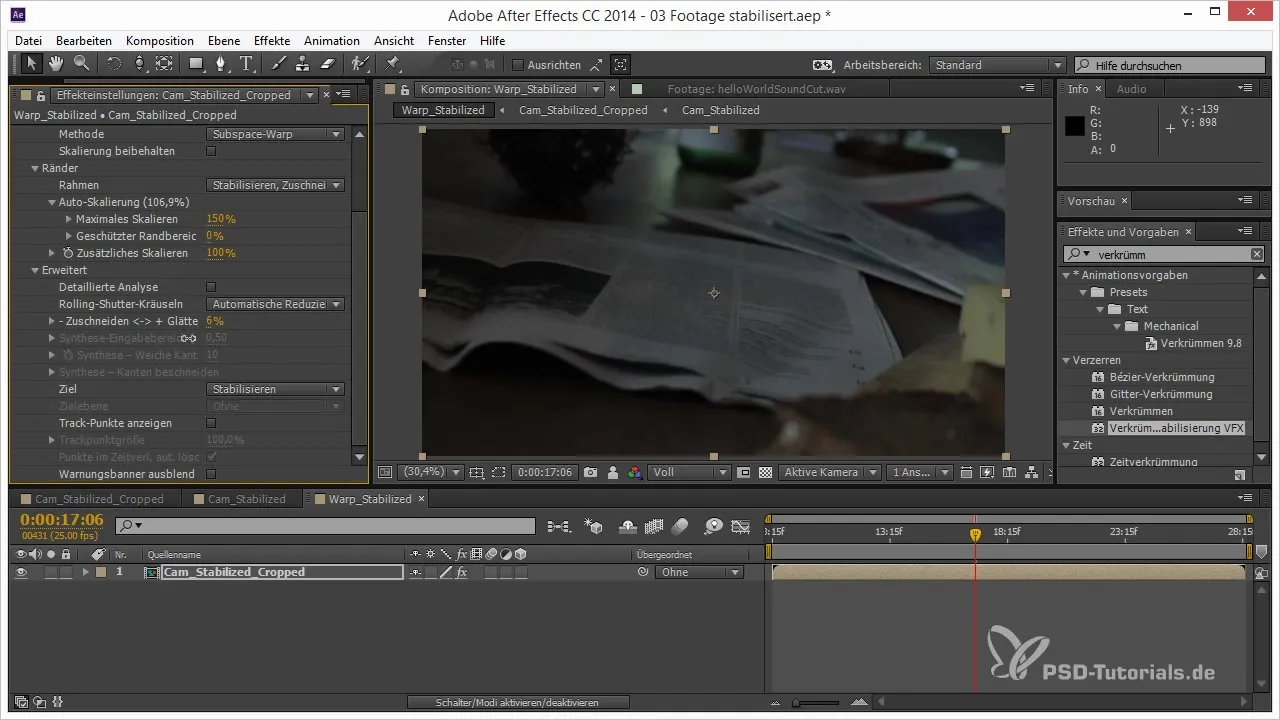
7. Compare with Original Video
To see the difference between the stabilized and original video, you can contrast both in a side-by-side view. Import both the stabilized and original version into the timeline and play them simultaneously.
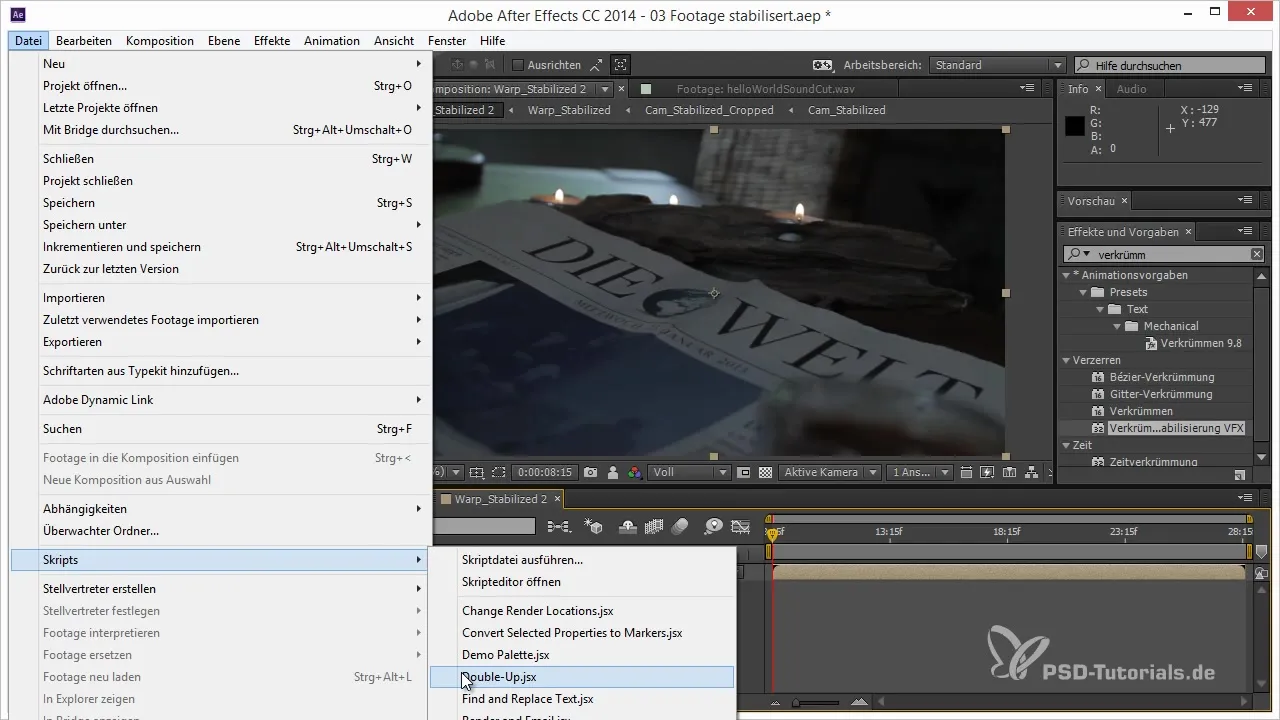
8. Adjustments in Color Grading
Once the stabilization looks satisfactory, it’s time for color grading. Use the curves tool in After Effects to adjust the colors and achieve a harmonious look.
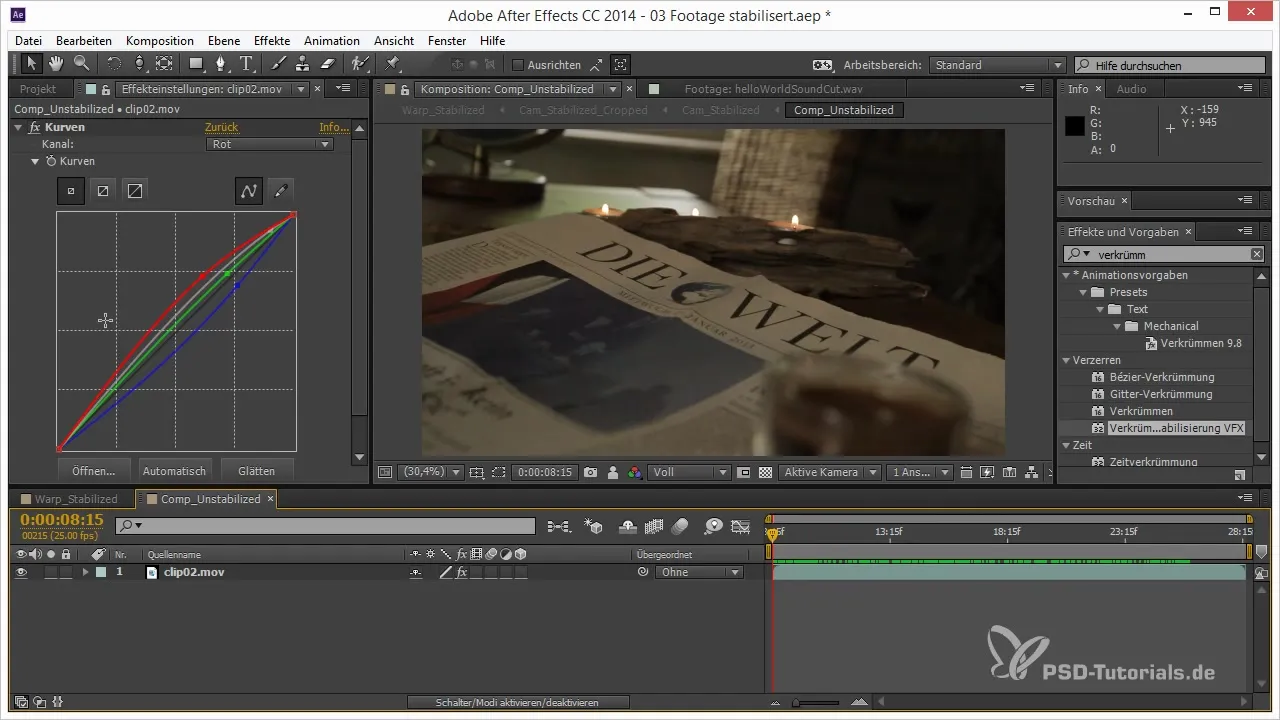
9. Insert Additional Content
When you now insert content, you can maintain stability. To ensure that new elements fit well into the overall picture, pay attention to how the foreground and background behave.
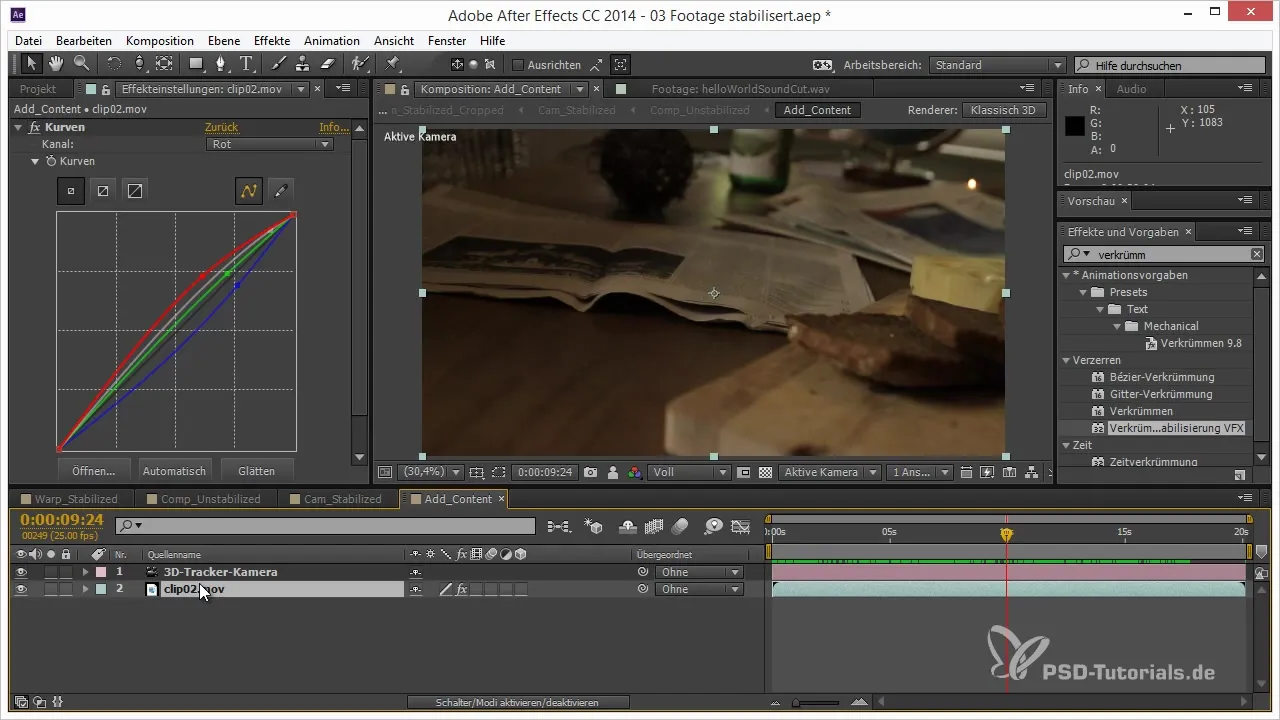
10. Final Review and Export
Finally, review everything closely. If all adjustments have been made and you are satisfied with the final result, export the video in the desired quality.
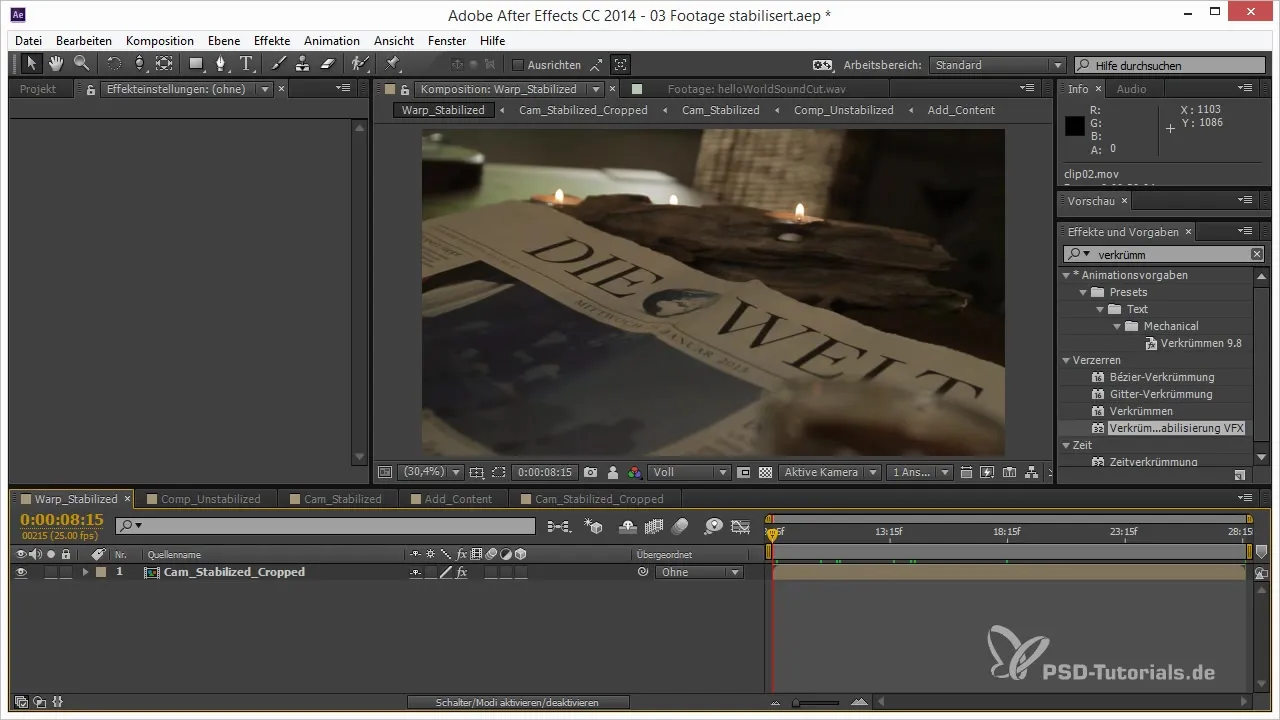
Summary – Effectively Master Final Stabilization of 3D Projects in After Effects
This guide provides you with the necessary tools to stabilize even heavily shaken footage in After Effects. With targeted adjustments and the use of the Warp Stabilizer technique, you can create high-quality videos that look professional.
Frequently Asked Questions
How does the Warp Stabilizer work in After Effects?The Warp Stabilizer analyzes the movements in a video and smooths them to produce a more stable output.
What is Subspace Warp technology?Subspace Warp is a method that enables After Effects to analyze and adjust foreground and background movements separately to minimize distortions.
How can I optimize the stabilization?You can adjust the settings for cropping and smoothing to achieve the best results for your specific footage.
Can I apply the Warp Stabilizer to all types of footage?Yes, the Warp Stabilizer can be applied to various video content as long as it is in a compatible composition.
What should I do if the stabilized video still looks shaky?Check the stabilization settings and experiment with the values. Enabling the Subspace Warp technology may help.


